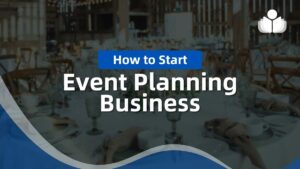Basics of Conducting Focus Groups
© Copyright Carter McNamara, MBA, PhD, Authenticity Consulting, LLC.
Sections in This Topic Include
- Preparing for Session
- Developing Questions
- Planning the Session
- Facilitating Session
- Immediately After Session
- General Information and Resources
- Ethics and Conducting Research
Also consider
Related Library Topics
Learn More in the Library’s Blogs Related to Focus Groups
In addition to the articles on this current page, see the following blogs which have posts related to Focus Groups. Scan down the blog’s page to see various posts. Also see the section “Recent Blog Posts” in the sidebar of the blog or click on “next” near the bottom of a post in the blog.
- Library’s Business Planning Blog
- Library’s Building a Business Blog
- Library’s Strategic Planning Blog
Focus groups are a powerful means to evaluate services or test new ideas. Basically, focus groups are interviews, but of 6-10 people at the same time in the same group. One can get a great deal of information during a focus group session.
Preparing for the Session
1. Identify the major objective of the meeting.
2. Carefully develop five to six questions (see below).
3. Plan your session (see below).
4. Call potential members to invite them to the meeting. Send them a follow-up invitation with a proposed agenda, session time and list of questions the group will discuss. Plan to provide a copy of the report from the session to each member and let them know you will do this.
5. About three days before the session, call each member to remind them to attend.
Developing Questions
1. Develop five to six questions – Session should last one to 1.5 hours — in this time, one can ask at most five or six questions.
2. Always first ask yourself what problem or need will be addressed by the information gathered during the session, e.g., examine if a new service or idea will work, further understand how a program is failing, etc.
3. Focus groups are basically multiple interviews. Therefore, many of the same guidelines for conducting focus groups are similar to conducting interviews (see the Basics of Conducting Interviews).
Planning the Session
1. Scheduling – Plan meetings to be one to 1.5 hours long. Over lunch seems to be a very good time for other to find time to attend.
2. Setting and Refreshments – Hold sessions in a conference room, or other setting with adequate air flow and lighting. Configure chairs so that all members can see each other. Provide name tags for members, as well. Provide refreshments, especially box lunches if the session is held over lunch.
3. Ground Rules – It’s critical that all members participate as much as possible, yet the session move along while generating useful information. Because the session is often a one-time occurrence, it’s useful to have a few, short ground rules that sustain participation, yet do so with focus. Consider the following three ground rules: a) keep focused, b) maintain momentum, and c) get closure on questions.
4. Agenda – Consider the following agenda: welcome, review of agenda, review of goal of the meeting, review of ground rules, introductions, questions and answers, wrap up.
5. Membership – Focus groups are usually conducted with 6-10 members who have some similar nature, e.g., similar age group, status in a program, etc. Select members who are likely to be participative and reflective. Attempt to select members who don’t know each other.
6. Plan to record the session with either an audio or audio-video recorder. Don’t count on your memory. If this isn’t practical, involve a co-facilitator who is there to take notes.
Facilitating the Session
1. Major goal of facilitation is collecting useful information to meet goal of meeting.
2. Introduce yourself and the co-facilitator, if used.
3. Explain the means to record the session.
4. Carry out the agenda – (See “agenda” above).
5. Carefully word each question before that question is addressed by the group. Allow the group a few minutes for each member to carefully record their answers. Then, facilitate discussion around the answers to each question, one at a time.
6. After each question is answered, carefully reflect back a summary of what you heard (the note taker may do this).
7. Ensure even participation. If one or two people are dominating the meeting, then call on others. Consider using a round- table approach, including going in one direction around the table, giving each person a minute to answer the question. If the domination persists, note it to the group and ask for ideas about how the participation can be increased.
8. Closing the session – Tell members that they will receive a copy of the report generated from their answers, thank them for coming, and adjourn the meeting.
Immediately After Session
1. Verify if the tape recorder, if used, worked throughout the session.
2. Make any notes on your written notes, e.g., to clarify any scratching, ensure pages are numbered, fill
out any notes that don’t make senses, etc.
3. Write down any observations made during the session. For example, where did the session occur and when, what was the nature of participation in the group? Were there any surprises during the session? Did the tape recorder break?
For the Category of Evaluations (Many Kinds):
To round out your knowledge of this Library topic, you may want to review some related topics, available from the link below. Each of the related topics includes free, online resources.
Also, scan the Recommended Books listed below. They have been selected for their relevance and highly practical nature.
 Sections of this topic
Sections of this topic
















